by Lisa Cooke | Feb 4, 2015 | 01 What's New, Ancestry, Book Club, DNA, Genealogy Gems Podcast, Genealogy TV, Google, Italian, Who Do You Think You Are?
 Are you ready for a hearty dose of genealogy edu-tainment? It’s all there in the newest episode of the free Genealogy Gems podcast: a genealogy television celebrity, a best-seller for our new Genealogy Gems Book Club title and an industry insider peek at Ancestry’s DNA products.
Are you ready for a hearty dose of genealogy edu-tainment? It’s all there in the newest episode of the free Genealogy Gems podcast: a genealogy television celebrity, a best-seller for our new Genealogy Gems Book Club title and an industry insider peek at Ancestry’s DNA products.
Since it’s the beginning of the year, a lot of television shows are ramping back up (like WDYTYA in March). Genealogy Roadshow on PBS will it be back with new episodes and a new addition to the panel of hosts: professional genealogist Mary Tedesco. She joins Lisa in this episode to talk about her experience on the show and about Italian research, her specialty.
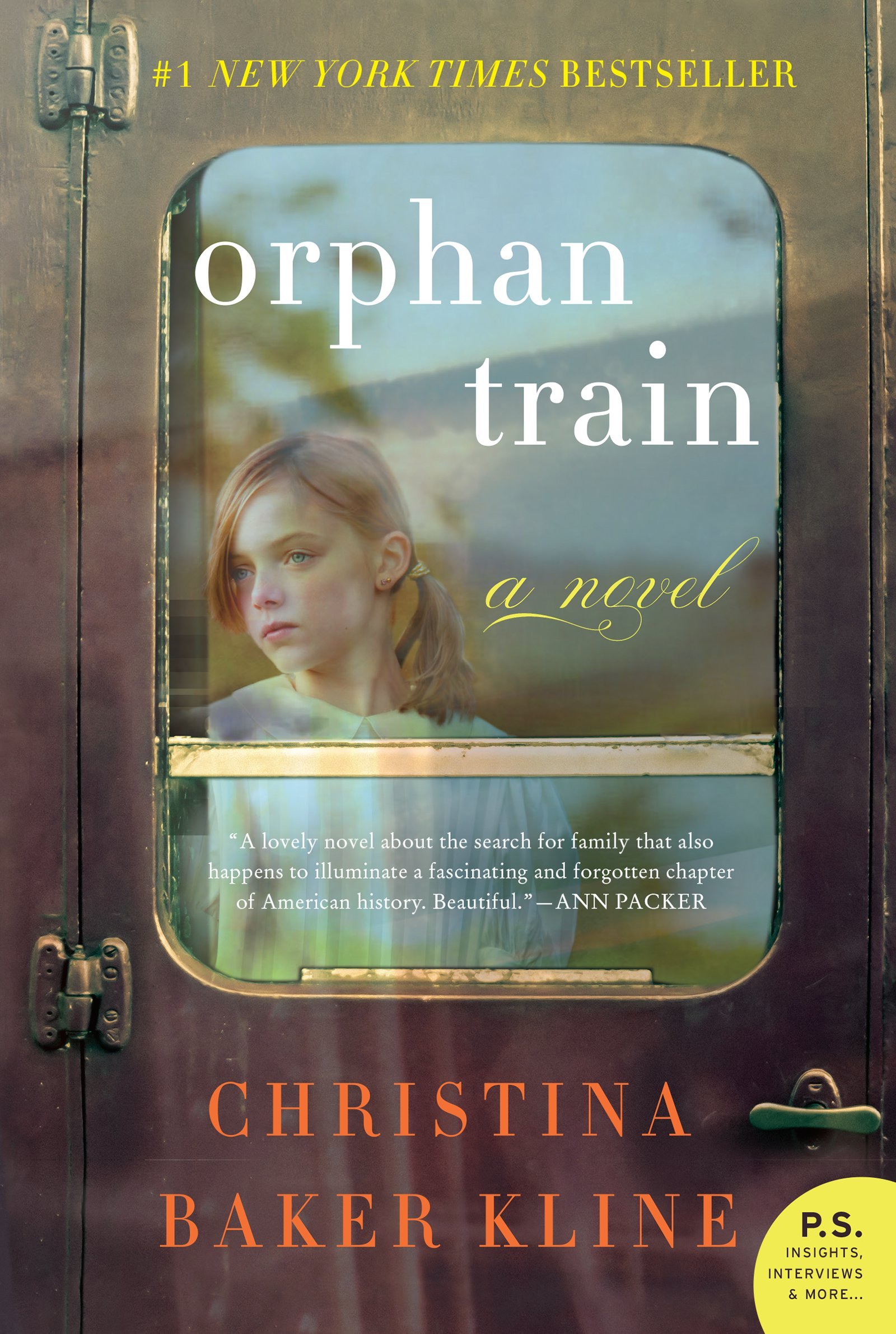 Did you hear about our new featured book for Genealogy Gems Book Club? It’s the internationally best-selling novel Orphan Train by Christina Baker Kline! Tune in to the episodes or click to the show notes to learn more about the book and why I chose it for our virtual book club. And don’t forget the best part of our book club: the author will join us for an exclusive interview! The interviews are fun even if you haven’t read the book, and fantastic if you have. That interview is coming up in May.
Did you hear about our new featured book for Genealogy Gems Book Club? It’s the internationally best-selling novel Orphan Train by Christina Baker Kline! Tune in to the episodes or click to the show notes to learn more about the book and why I chose it for our virtual book club. And don’t forget the best part of our book club: the author will join us for an exclusive interview! The interviews are fun even if you haven’t read the book, and fantastic if you have. That interview is coming up in May.
DNA Guide Diahan Southard also makes an appearance on the January Genealogy Gems podcast episodes. She offers a frank insider’s opinion of what’s going on with AncestryDNA and Ancestry.com’s DNA Circles feature. Stay up-to-date in this fast-moving and fascinating aspect of genealogy with Your DNA Guide on Genealogy Gems!
Finally, you’ll hear about Lisa’s newest project. Available by popular demand is the revised and updated 2nd edition of The Genealogist’s Google Toolbox!

by Lisa Cooke | Jan 19, 2015 | 01 What's New, DNA, images, Social Media
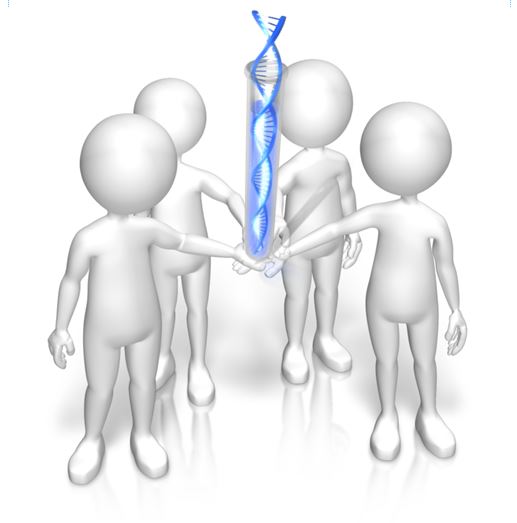 Family history organizations and studies based on individual surnames have been around for years. They are now integrating YDNA research into their efforts. Use surname projects to enhance your paternal DNA research!
Family history organizations and studies based on individual surnames have been around for years. They are now integrating YDNA research into their efforts. Use surname projects to enhance your paternal DNA research!
Surnames are the flagships of our genealogical research. We name our files after them and we tag our research with them. We wear our last names proudly on pins and necklaces and T-shirts.
But surnames can also be misleading. Illiteracy, language barriers, and just plain carelessness led to misspellings and alterations, not to mention those ancestors who blatantly changed their name to avoid detection.
The advent of YDNA testing has changed the way many genealogists view surnames and their role in their genealogy. Because a man’s YDNA is the same as the YDNA carried by each of the ancestors in his direct paternal line, the YDNA can act like a filter, clearly indicating which men with a particular surname, or variant, truly share a direct paternal line.
So how has YDNA testing affected family organizations that do surname research? I asked Debbie Kennett, a regular contributor to the International Society of Genetic Genealogy Wiki and Facebook page who is also involved with the Guild of One Name Studies. The Guild of One Name Studies was established in 1979 to promote public understanding of one-name studies and preserve the information obtained by those studies.
“Virtually every common surname is now the subject of a DNA project,” says Debbie, including “just over 500 Guild members who are running a DNA project. That number has jumped up considerably just in the last couple of years.”
The quality of those projects varies. Debbie tells us that a quality YDNA project includes three elements: “presenting the DNA data, recruiting people from different countries and also correlating all of the genealogy information.”
Jean Morrison, a member of the Morrison surname project, says that because of DNA testing, “identifying where in Scotland this family originated prior to coming to America ca 1728 has become a realistic goal. The Morrison Q Group has identified through Y line testing at 111 markers, 22 individuals with an MRCA (most recent common ancestor) within eight generations.” In plain English, this means that a definite YDNA pattern has been associated with her Morrison surname and with a common ancestor eight generations back.
Noel and Ron Taylor were two early adopters of YDNA testing for their Taylor family project. Their first samples were submitted to the Sorenson Molecular Genealogy Foundation in 2000. The former president and currently the head of the board of trustees for the Taylor Family Society, Noel says that using DNA “caught the attention of many people in our organization….It renewed great interest in the hearts of many people who had been doing research for many years [who may have] lost interest and were somewhat discouraged.” The Taylors have made significant breakthroughs with their DNA testing. They have connected several Taylor lines back to a common ancestor, verified their paper trails, and even found a line of Hodges that were actually Taylors!
It appears that YDNA is becoming part of the research plan for most family societies. But Debbie tells us that there is still much room for improvement in her organization. “Not all Guild members are running [DNA] projects. We have something like 2,700 Guild members so we are still not at the stage where the majority of Guild members are running projects.”
Besides The Guild, other organizations have been created to assist genealogists with their surname research, including a new organization just launched in November. The Surname Society’s goal is to “to build a collaborative environment where members are encouraged to develop their own approach to the investigation of their surname.”
Kirsty Grey, chairman of the Surname Society, says that DNA testing has taken a front seat role in the research of one of their founders as well as several early members. “DNA is one of the many strands of family history research (and to a greater extent, surname studies) which can connect individuals, often where genealogical research cannot.”
That really is the bottom line. DNA, especially YDNA, can tell you things about the surnames in your pedigree that you can’t learn in any other way. If you haven’t yet, it’s time to jump on the YDNA bandwagon and see what your DNA has to tell you.
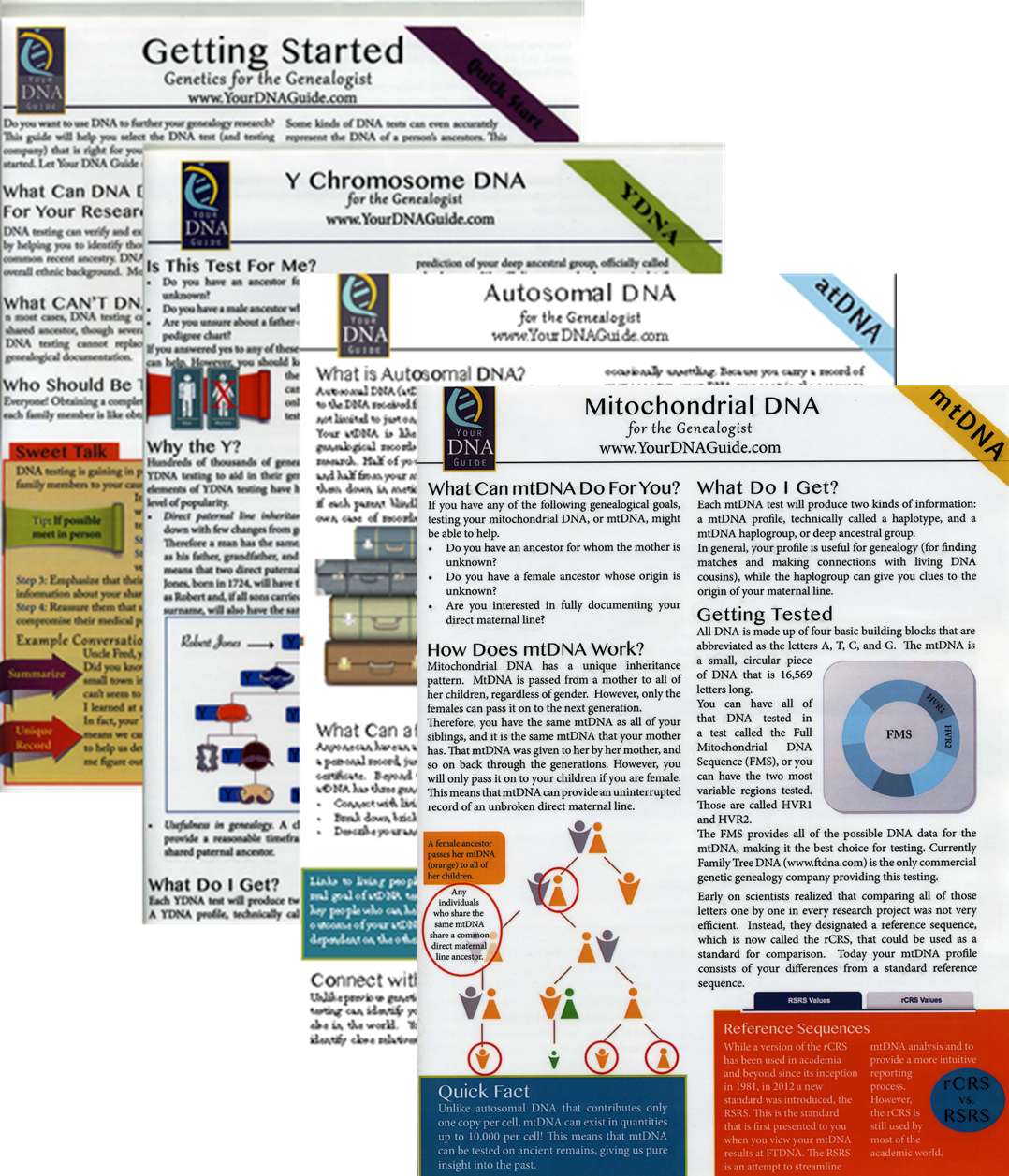 I can help you! Check out my series of quick guides (purchase all 4 laminated guides or the digital download bundle for the best deal):
I can help you! Check out my series of quick guides (purchase all 4 laminated guides or the digital download bundle for the best deal):
by Lisa Cooke | Dec 30, 2014 | 01 What's New, British, DNA

Earliest surviving portrait of Richard III. Wikimedia Commons image.
An article recently published in Nature Communications confirmed the identity of the remains of King Richard III by DNA testing. This result wasn’t a huge surprise, but there were some eyebrow-raising findings along the way. More to the point, now a celebrity case study teaches us more about how to use DNA in family history research.
Prior to the genetic investigation of the skeletal remains presumed to be that of Plantagenet King Richard III, there was already mounting evidence that this was indeed his body. Genetic genealogists can take cues from this research to learn how to more fully integrate your genetic testing into your genealogy.
While these researchers were able to use radiocarbon dating and skeletal analysis methods that most of us won’t have access to, they did pore over a substantial amount of historical evidence to substantiate the last known whereabouts of Richard III. The archaeological, skeletal, and historical evidence were overwhelmingly in favor of this positive identification. But it was the genetic evidence that provided the last, ahem, nail in the coffin.
In this case the nail was made of mitochondrial DNA, or mtDNA. King Richard shares his mtDNA with anyone who is also related in a direct maternal line to his mother. There were two such candidates found, both sharing mtDNA with the skeleton presumed to be King Richard, thus further verifying its identity. In fact, lead researcher Turi King said of the findings, “If you put all the data together, the evidence is overwhelming that these are the remains of Richard III.”
Of interesting note to us as genetic genealogists is that one of the two mtDNA samples used for reference did have one difference from the mtDNA signature shared by the other individual and the skeleton. This did not jeopardize the integrity of the results, but rather provided a good case study in how DNA does change over time.
You would think that the DNA match confirming the identity of the skeleton would be the biggest news out of this round of DNA testing. But along with the direct maternal line testing, there was also direct paternal line testing to try to verify the paternal line of the skeleton.
Genealogists worked tirelessly to identify direct paternal descendants of Richard III’s great-great grandfather Edward III and five were found and tested. Their results revealed not one but THREE different paternal lines.
While the results were not quite as expected, they weren’t exactly unexpected either, as there are plenty of royal rumors of non-paternity (click here for a summary). Watch a brief video discussion of the yDNA results here:
Again, the YDNA portion of the study provides a great case study for us in how to use YDNA, namely that it takes a lot of traditional genealogical work to find direct paternal line descendants to be tested, and that the results are conclusive, but can sometimes provide more questions than answers.
The Richard III DNA drama has started many families talking about “doing” their own DNA. Learn how with my series of quick guides (purchase all 4 laminated guides or the digital download bundle for the best deal);
Visit my website to learn about expert consultations with me. You’ll get customized guidance on which tests to order and how to maximize your results for your genealogy research.
by Lisa Cooke | Dec 23, 2014 | 01 What's New, Adoption, British, Canadian, DNA, Family Reunions, Research Skills
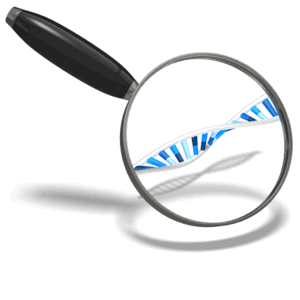 Knowing your genealogical question can make DNA testing for adoptees (and anyone else) more focused and relevant. Being patient and determined—not quitting after a single test’s results—can also pay off, as it did for Paul Dobbs, a Welsh-born man who followed his adoptive father to Canada only to learn he was fathered by a U.S. serviceman.
Knowing your genealogical question can make DNA testing for adoptees (and anyone else) more focused and relevant. Being patient and determined—not quitting after a single test’s results—can also pay off, as it did for Paul Dobbs, a Welsh-born man who followed his adoptive father to Canada only to learn he was fathered by a U.S. serviceman.
Paul Dobbs didn’t find out that Len Dodds wasn’t his biological father until after the man who’d raised him to adulthood passed away. The truth came out during a genetic investigation into Len’s rare medical condition. He learned that he was child of an American soldier stationed in Wales during World War II. But years of traditional genealogical research led to dead ends. Then Paul turned to DNA and found a match: a first cousin.
With the help of his new-found cousin and the traditional genealogical records available about servicemen serving in Cardiff at the end of World War II, Paul was able to form a convincing hypothesis about the identity of his biological father.
He reached out to a potential half sibling who agreed to conduct a DNA test to explore this option.
She was a match. Paul had found his biological family! (Read his story in the Vancouver Sun.)
Not everyone will find their birth parents through DNA testing. But Paul took an approach that can serve anyone looking for biological kin through DNA. His experience reminds us that knowing your genealogical question can make DNA testing more focused and relevant. Being patient and determined—not quitting after a single test’s results—can also pay off, as it did for Paul.
For any male adoptee seeking his father, the yDNA test is a logical route to take. This is where Paul turned first. The yDNA provides an undiluted record of a direct paternal line. This can often help adoptees identify a surname for their paternal line. However, Paul did not have the success he was hoping for with yDNA testing.
He then turned to autosomal DNA testing. Remember that this kind of test traces both your paternal and maternal lines and reports back to you matches in the database that have predicted relationships like, “2-4th cousins” or “3rd-5th cousins” and then you are left to decipher who your common ancestor might be.
DNA testing is a great option for adoptees to get a jumpstart on their genealogy. However, before testing, everyone, adoptees included, should carefully consider how the results of testing may impact you and your family, both biological and adopted.
 Ready to learn more about your family with DNA testing? Learn how to with my series of quick guides. Purchase each guide individually or pick up the bundle of all 4 for the best deal!
Ready to learn more about your family with DNA testing? Learn how to with my series of quick guides. Purchase each guide individually or pick up the bundle of all 4 for the best deal!
Visit my website to learn about expert consultations with me. You’ll get customized guidance on which tests to order and how to maximize your results for your genealogy research.
by Lisa Cooke | Dec 17, 2014 | 01 What's New, Digital Archives, DNA, History, Inspiration
A new project backed by top British scientists is crowd-sourcing space exploration by offering donors the chance to put their DNA on the moon. Their first Kickstarter 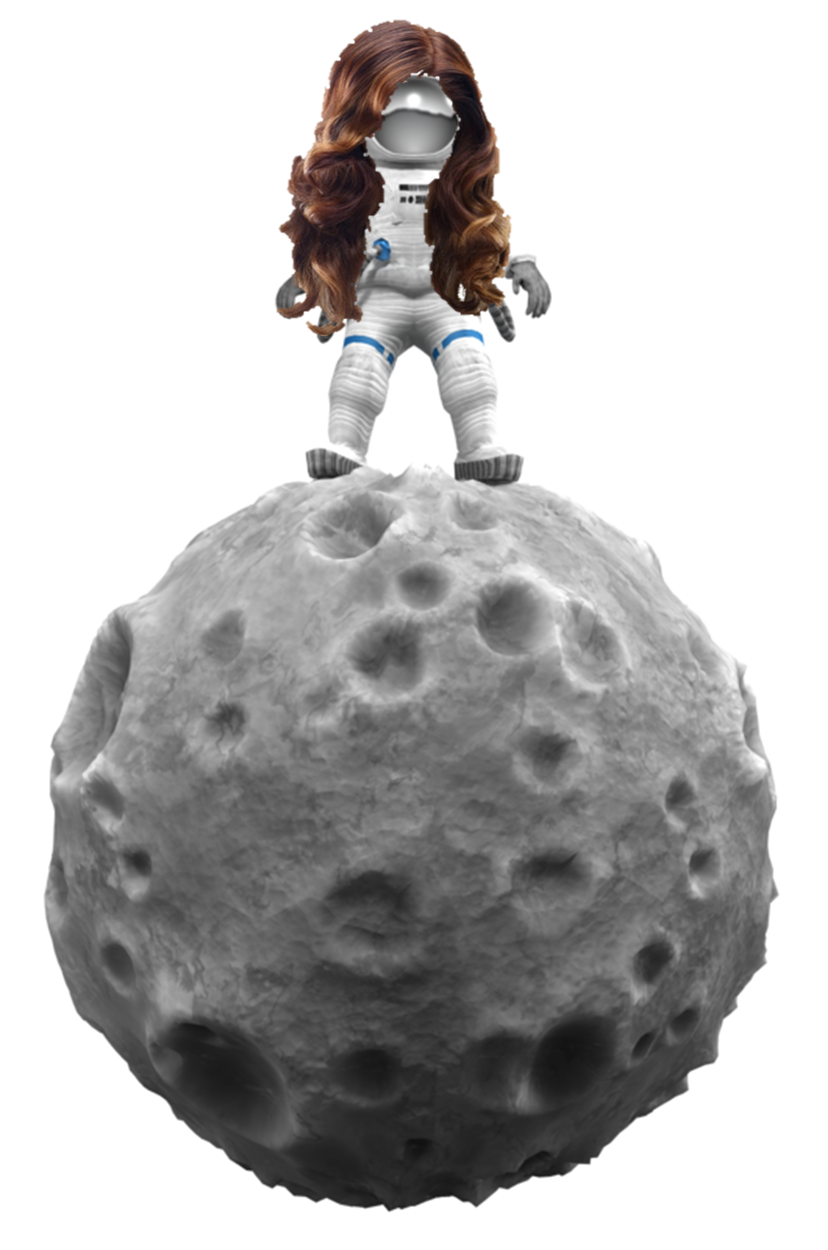 campaign successfully ends today: over £600,000 has been raised in less than a month!
campaign successfully ends today: over £600,000 has been raised in less than a month!
Lunar Mission One hopes to put a research craft on the “South Pole” end of the moon within ten years. The vessel will drill deep into the rock in an effort to learn more about the moon’s origin and history.
Around 6700 individual pledges were made in this first phase of funding. Those who pledged at a certain amount will receive space in a “digital memory box” that will be sent into space with the research craft, a sort of 21st-century time capsule and digital archive on the moon.
“People will be able to upload whatever they want to their memory box – including personal messages, photos, audio and video,” promises the Lunar Mission One website. “There will also be the option to submit a strand of hair for those who wish to store their DNA for inclusion in the time capsule.”
“The price of the digital memory boxes will be determined by capacity – starting from as little as a few dollars. Most digital information-only purchases are expected to be $10+. Customers who want to combine digital information with a strand of hair, will pay $100+. We are also developing prestige packages ($1,000+) and a lottery option from $1.”
What do you think? It’s not too late to join the fun! According to the Lunar Mission One website, “Following the Kickstarter fundraising, and for the next four years, people will still be able to reserve space in the private archive, through an online portal. This could be for themselves or as a gift. Individuals will be able to get involved in other ways, such as through membership of our Supporters Club.” Learn more at the Lunar Mission One website.
![]() Are you ready for a hearty dose of genealogy edu-tainment? It’s all there in the newest episode of the free Genealogy Gems podcast: a genealogy television celebrity, a best-seller for our new Genealogy Gems Book Club title and an industry insider peek at Ancestry’s DNA products.
Are you ready for a hearty dose of genealogy edu-tainment? It’s all there in the newest episode of the free Genealogy Gems podcast: a genealogy television celebrity, a best-seller for our new Genealogy Gems Book Club title and an industry insider peek at Ancestry’s DNA products. Did you hear about our new featured book for Genealogy Gems Book Club? It’s the internationally best-selling novel Orphan Train by Christina Baker Kline! Tune in to the episodes or click to the show notes to learn more about the book and why I chose it for our virtual book club. And don’t forget the best part of our book club: the author will join us for an exclusive interview! The interviews are fun even if you haven’t read the book, and fantastic if you have. That interview is coming up in May.
Did you hear about our new featured book for Genealogy Gems Book Club? It’s the internationally best-selling novel Orphan Train by Christina Baker Kline! Tune in to the episodes or click to the show notes to learn more about the book and why I chose it for our virtual book club. And don’t forget the best part of our book club: the author will join us for an exclusive interview! The interviews are fun even if you haven’t read the book, and fantastic if you have. That interview is coming up in May.





 campaign successfully ends today: over £600,000 has been raised in less than a month!
campaign successfully ends today: over £600,000 has been raised in less than a month!


